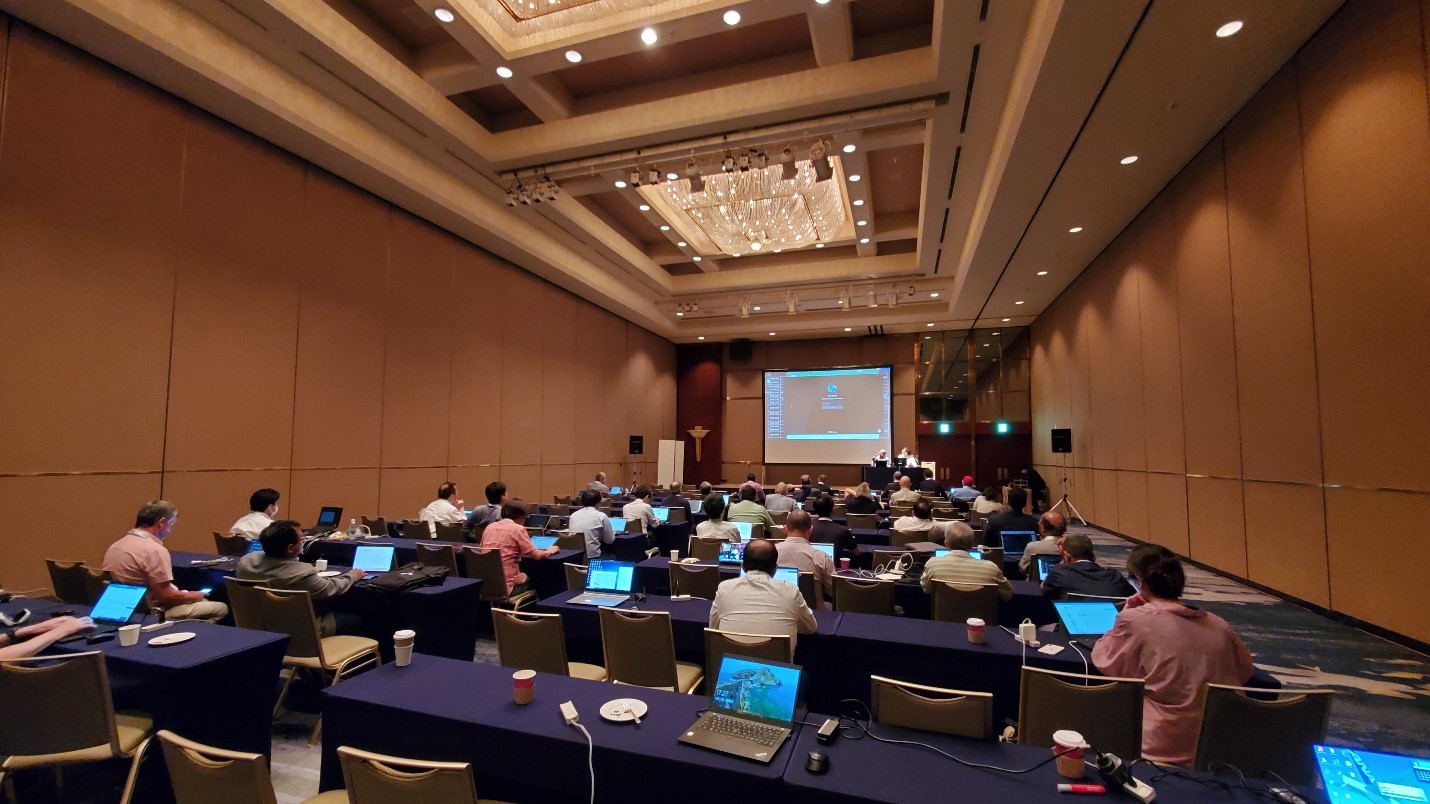O-RAN alliance and ETSI NFV Joint workshop (June 21st, 2023 Osaka, Japan)
On Wednesday 21 June, 2023, a joint workshop between O-RAN Alliance and ETSI ISG NFV took place during the O-RAN Alliance face-to-face meeting in Osaka, Japan.

The goal of the workshop was to exchange information and foster discussion about the synergies and potential collaboration between the two organizations.
RAN Virtualization concepts by O-RAN Alliance
Although 5G core network (5GCN) virtualization offers the foundation over which the NFV concept can be demonstrated and the NFV‑MANO can be applied for the management and orchestration of the mobile network, the idea of disaggregating and virtualising the RAN, only recently has been endorsed by the industry.
O-RAN Alliance is trying to delineate the concept, provide a reference architecture, derive deployment models and standardize the relevant interfaces that will enable control, management, and orchestration of the virtualised RAN.
ETSI NFV and O-RAN Alliance common areas of activity
Following the same principles as in the case of 5GCN towards building open, virtualized, interoperable systems, when it comes to RAN virtualization, unique characteristics need to also be considered. These span several areas, such as the need of real-time control of network functions, advanced orchestration and management of infrastructure, network services and network functions, the ability to integrate third party applications into the system (i.e., rApps, xApps) and 5G transport network management (XHaul-based approach), just to name few.
In the group report document ETSI GR NFV-IFA 046 an initial attempt of profiling the ETSI NFV framework to the O-RAN solutions has been made. The document delves around four key issues, which are analyzed when considering an NFV-MANO aware O-RAN orchestration and management solution:
- Key Issue A: Architectural mappings
- Key Issue B: Support for acceleration abstraction
- Key Issue C: VNF descriptors and packaging
- Key Issue D: Transport network management
ETSI GR NFV-IFA 046 was published on 2023-05-26 and is accessible from: https://www.etsi.org/deliver/etsi_gr/NFV-IFA/001_099/046/05.01.01_60/gr_nfv-ifa046v050101p.pdf
NFV-MANO can cope with multiple virtualization and cloud technologies and it considers almost all the dimensions when it comes to orchestration and management of network services and VNFs in the two predominant deployment environments, i.e., container or VM-based environments, or even in combinations of the two.
Note that since ETSI NFV Release 4, the NFV-MANO framework offers support for the deployment and management of container-based (or also sometimes referred as cloud-native) network functions. See also https://www.etsi.org/newsroom/blogs/technologies/entry/nfv-39th-first-completion-of-the-stage-3-specs-for-containerized-vnf-lifecycle-management-by-nfv-mano-framework-and-preparation-for-nfv-release-6
In this regard, the following can be considered as technical areas pertaining both SDOs from standards development perspective, including the four topics analyzed by ETSI GR NFV-IFA 046:
- Network and network functions virtualization and cloudification,
- Packaging and descriptors for network functions,
- Fault and performance management of resources, network functions and network services,
- Network provisioning and infrastructure resource management,
- Management and orchestration architecture, and
- Security.
Additional topics like energy consumption, intent management and PaaS management can also be anticipated as future areas of common research and standardization activity. All these areas are envisioned to consider the needs of network operators when virtualizing/cloudifying their networks. Hence, the derivation of architectural, functional, interface and modeling requirements based on network operator use cases is of critical importance.
Workshop presentations
The goal of the workshop presentations was to provide the insight and the appropriate technical background to better understand the great potential of reusing ETSI NFV specifications for vRAN, in various areas. ETSI NFV provided the following presentations:
- Introduction of the ETSI NFV ISG, overall ETSI NFV ecosystem and relationship between ETSI NFV and other SDOs, presented by Yoshihiro Nakajima (ISG NFV Chair, NTT DOCOMO),
- ETSI NFV concepts, architecture and highlights for Release 4 and 5 and upcoming Release 6 features, presented by Lingli Deng (ISG NFV TST WG vice-chair, China Mobile),
- Support for containers in NFV and relationship with Kubernetes ecosystem, presented by Joan Triay (Rapporteur, NTT DOCOMO),
- Summary of ETSI GR NFV-IFA 046, presented by Kostas Katsalis (Rapporteur, NTT DOCOMO), and
- Analysis of what we can (and cannot) cover (and how) per O-RAN WG activity, presented by Joan Triay (Rapporteur, NTT DOCOMO).
While O-RAN Alliance presented about the following topics:
- O-RAN overview, presented by Jiajin Gao (O-RAN SDFG co-chair, China Mobile),
- O-RAN architecture overview, presented by Haseeb Akhtar (O-RAN WG1 Architecture Task Group chair, Ericsson),
- O-RAN OAM, presented by David Kinsey (O-RAN WG10 co-chair, AT&T),
- O-RAN Cloudification and Orchestration, presented by Paul Carver (O-RAN WG6 co-chair, AT&T), and
- O-RAN security, presented by Mohamad Hajj (O-RAN WG11 representative).
The workshop presentations provided by ETSI NFV can be found here:
- ETSI NFV and O-RAN workshop - presentation of IFA046
- ETSI NFV and O-RAN workshop - container mgmt in NFV
- ETSI NFV and O-RAN workshop - Introduction of ETSI ISG NFV and conclusions
- ETSI NFV and O-RAN workshop - activity overview and relations
Conclusions and future steps
Both ETSI NFV and O-RAN alliance are expected to use their best endeavors, to enhance their collaboration on common matters related to virtualized RAN orchestration and management.
By following industry-ready ETSI NFV specifications, collaboration between ETSI NFV and O-RAN Alliance is expected to unleash the potential of virtualized RAN by means of orchestration and management and precipitate the adoption of O-RAN concepts by the industry.
In addition, NFV specifications are expected to be enhanced based on new challenging O-RAN requirements and compelling new functionalities like RT RIC and Near-RT RIC, rApps/xApps, need for CRDs and need for physical infrastructure management.

